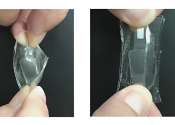New substrate material for flexible electronics could help combat e-waste
Electronic waste, or e-waste, is a rapidly growing global problem, and it's expected to worsen with the production of new kinds of flexible electronics for robotics, wearable devices, health monitors, and other new applications, ...
Aug 6, 2024
0
32









